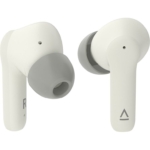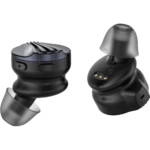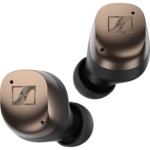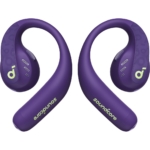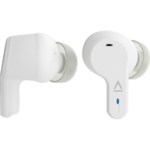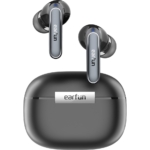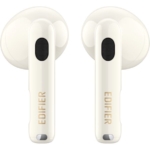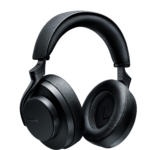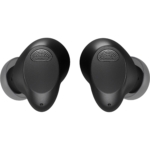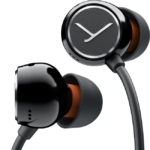I would like to start my conclusion on a positive note by recommending for whom the Aftershokz Trekz Air are suitable. These are users who want to make hands- and ear-free calls during sports, in the office or on the beach. As a luxurious hands-free system that is comfortable to wear, delivers good bilateral speech quality and doesn’t mind sweat, the headset is a good choice. On the other hand, I would advise all music lovers against it, because the frequency spectrum here is simply too narrow and the volume reserve too low to deliver a even rudimentary, enjoyable sound image.
“Having your ears free when listening to music and making phone calls” could be described as the technical trend of this summer. Whether it’s Bose with their Altos, Sony with their STH40D headset or Aftershokz with their “Trekz Air” – many manufacturers are trying out all sorts of tricky technical solutions to keep the consumer’s ears uncovered when listening to music.

The various ideas for pulling off this seemingly impossible trick are quite different. While Bose’s Altos focus on directional sound reinforcement in the immediate vicinity of the auditory canal, Sony and Aftershokz work with a dual system consisting of a loudspeaker that serves the high-frequency range and a “bone conduction headphone” element. This is an electromagnetic vibrator that transmits vibrations directly to the temporal bone. Some reactions to this technology can cause concern, but users should be reassured that the phenomenon, called body- or bone-conduction sound, is a normal, harmless, physiological effect.
First impression
The Aftershokz Trekz Air basically consists of a single part: a bracket, which is placed around the head and in which the battery, control and microphone/speaker sections are integrated. The 30-gram Trekz Air is actually held to the head with support over the auricles. On the left-hand headphone, there is an easily accessible multi-function button that controls the following: play/pause, next track, answer/reject/end call, voice dialling and redial. On the right are the Micro-USB charging socket and two – far less accessible – mini buttons (+/-), which can be used to control the volume, on/off, pairing and the equalizer.
Practice
A complete charging process takes about two hours, but the Trekz Air pays back with about six hours playing time. In addition to the simple Bluetooth pairing (profiles: A2DP, AVRCP, HSP, HFP), the Trekz Air can also simultaneously connect to a second Bluetooth device. This is practical if you want to use the audio services (especially the telephone) of the handset simultaneously with a laptop and a mobile phone. In order to be completely undisturbed by the environment, Aftershokz also supplies a pair of earplugs. Once these are inserted into the ear, an alternative equalizer curve can be activated on the receiver, which lowers the bass a little since the sound gains some bass when the ear is closed.
Sound
Let’s make it short: The Trekz Air doesn’t sound (or should that be vibrate?) good. The unsatisfactory hearing impression results from two factors. Firstly, the volume range in which they can be operated is very low. If you turn them up too much, you will quickly notice an unpleasant resonance in the headphone, which then “tickles” your temples. On the other hand, the audible frequency range is extremely mid-heavy. I haven’t tested any other bone conduction headphones so far, so I can’t say whether this is a principle-related deficit or whether the Trekz Air is simply not doing the job well. For a little background sound it might be okay, especially since the effect of listening to music with your ears free is pretty great, but all this is far from being real listening pleasure, let alone music enjoyment. But the picture is completely different when you’re on the phone. Here, the extreme presence in the middle ensures good speech intelligibility. This also shows the positive effect of “free ears”, because it is extremely pleasant and dramatically improves control over one’s own voice when one can suddenly hear oneself again while speaking.
Technical specifications
- Ear couplingBone conduction
- Frequency response (headphones)20 - 20.000 Hz
- Sound pressure level (SPL)100 ± 3 dB
- Weight with cable30 g
What's in the box
- Earplugs
- USB charging cable
- Carrying pouch
Special features
- available in blue, grey and red
- BT version: 4.2
- BT profiles: A2DP, AVRCP, HSP, HFP














